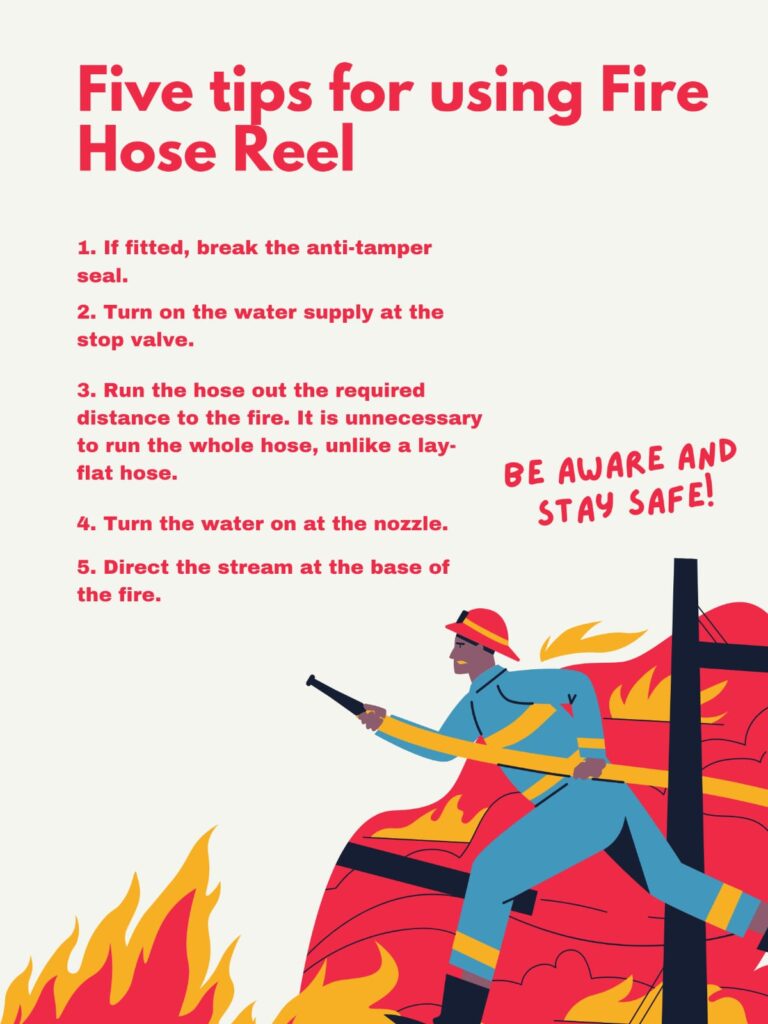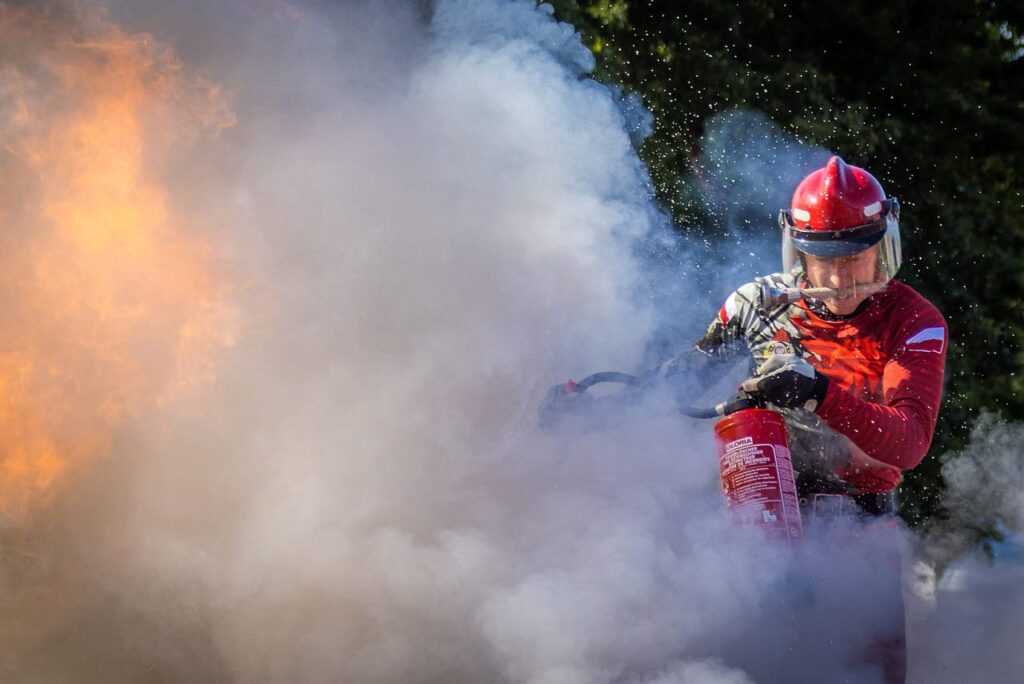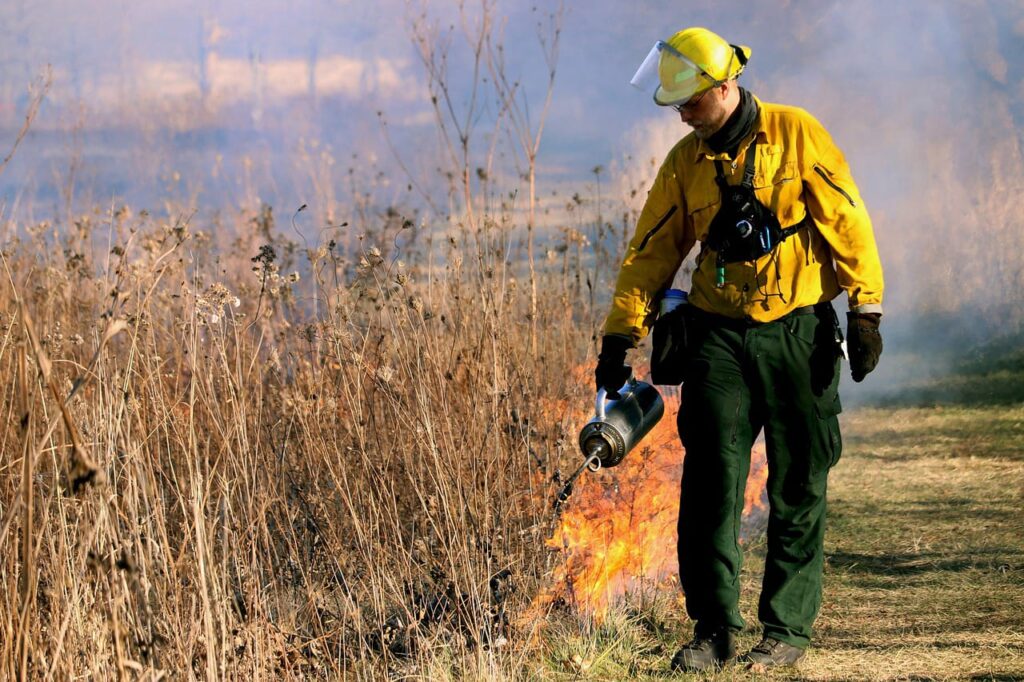What is a Fire Hose?
A pipe used in extinguishing fire. A fire hose is a high-pressure hose that is used to extinguish fire.
Fire hoses are best used when facing Class A fires. These fires involvenvolve paper, rubber, carbon solid materials, and laA fire hose providesrovides a tremendous initial response to flames with a water source.
A fire hose system of the following types :
- Hose: Non-kinking tubing transfepressurizeded water.
- Hose Reel Nozzle: The controlling nozzle is attached to the end of the hose.
- Fire Hose Reel Cabinets: Storage protects the fire hose.
- Wall Mount Bracket: Its bases are fixed to a wall.
- Hose Reel Cover: Fabric cover protects from damaging elements.
- Hose Reel Signage: The location sign is displayed in the area.
Knowing how to use a fire hose when a fire occurs is sig ificant. Fightinet’sse is an tfiLet’to learnt’searn how to use fire hoses for safety.
Step 1: Understand the types of fire hoses
Attack and supply hoses aree the two most common types of fire hoses.
Attack hose – to direct water or other extinguishing agents.
Supply hose – to transport water from the source.
Step 2: Choose the proper hose
It is essential to select the proper hosebefore using a fire hose. This means consideri g the type of fire, its size, and the environment in which the fire is burning.
Step 3: Inspect the hose
It is necessary to inspect it for any signs of damage. Then, check the hose for cracks, cuts, and holes. Ensure that all fitt ngs are secure. Ensure that it is fu ctioning correctly and is not clogged.
SAfter After choosing and inspecting the proAfter choosing and inspecting the proper hoseply hose conto the waterwa er supply t, and t, and the attack ho, water supply attack, and t, and the attack hose connects to the ll connections are tight.
Step 5: Position
Position the fire hose close to the fire. Make sure he hose is not twisted.
Step 6: Turn on the water
Ensure everyone is clear of the area, then turn on the water before fully opening the valve and allowingit to build up pressure.
Step 7: Use it.
Begin spraying water and direct the nozzle toward the fireUse the no zlens to cover. Ensur that the nozzle stays.
Step 8: Monitor the fire
Before turning off the water, ensure that the fire is completely extinguished.
Fire Hoses: A Comprehensive Guide
a high-pressure tube designed to carry water or fire suppression agents to extinguish fires. Firef ghters use fire hoses, a controlled stream of water onto a fire to suppress or extinguish it, a crucial component of firefighting equipment. These hoses are durable, readily available, and come in various types to suit different firefighting needs.
Types of Fire Hoses
Fire hoses are an integral part of fire equipment. They are esigned to convey water or fire retardants to extinguish fires. Several t pes of fire hoses, each designed for specific applications:
Attack Hose: This is the fire hose used by the fire department. It is des gned to combat fires, is typically lightweight, and delivers water or other fire retardants directly onto the fire. The attac hose is used in conjunction with a nozzle, which can adjust the flow and direction of the water.
Supply Hose: in diam. Ter, Thes are large, often ranging from 1.5 to 5 inches. Supply ho es are designed to move sizeable pressurized water or volumes of water from a hydrant source to the fire pump on a fire engine.
Suction Hose: These hoses draw water from an unpressurized supply like a portable pool, water tank, or other static water source. They are ypically used in rural areas and operate under negative pressure where hydrants are not available.
Testing Parameters of Fire Hoses
Fire hoses undergo rigorous testing to ensure their effectiveness aashose’sheohose’se’sh e’sheohose’se’shehose’sheshe readabilitylitya,,bility, durability, and resistance to various environmental conditions. Here are the ritical testing parameters:
Internal Diameter: The internal diameter of a fire hose is crucial because it determines the amount of water that can be delivered. It is checked using a cylindrical or conical plug gauge of the required sizes. Leng: Thelen h of the hose stil s it is the distance over which water can be delivered. It is measured usi a tape.
Coil Diameter: The coil diammemeasurhose’smeasurehose’smeasureofrehose’smeasureofmeasureofreof the ability
Hydrostatic Proof Press: This test is performed using hydrostatic pressure testing. It determines the withstand.
Hydrostatic Burst Pressure Test: This test checks the the withstand andd pressure beyond its maximum working pressure without rupturing.
Adhesion Test: This test checks the adhesion that is therebetween could affect its performance.
Where are fire hoses used without rupturing?
Outdoors: Fire hoses attach to a fire hydrant, a fire engine, or a portable fire pumpIndoors building’ss’s permaabuilding’ssh to a building’s standpipe.
Industrial Facilities: Fire hose reels are ininintegralrto theety systems.
Commercial Buildings: Fire hoses provide commercial end-users with fire safety in offices and commercial buildings in offices and commercial build—commonlyplplumbuilding’sing’slumbuilding’sing’smbuilding’sing’sng’s areas in residential areas.
Who are the Users of Fire Hoses?
Firefighters: Firefighters are the primary users.
Municipal Fire Services: because of their crucial role in suppressing widespread fire, Fire hoses are indispensable to the municipal fire service industry.
Industriwhwhere’shere’swhwwhwhere’shere’swherere’se’there’s,, a risk of industrial users alsusingse fire hoses,
Commercial End-Users: Fire hoses are usually stored with a hose reel in a fire safety cabinet, along with other fire safety equipment, in offices and commercial buildings.
Maintenance of Fire Hoses
Proper thewhwherere’sehthere’stivenesssehthere’stivenessnd effectiveness of fire hoses. Here are ritical aspects of fire hose :
Proper Usage: Avoid using the hose over abrasive surfaces or sharp edges, which could cut or tear it. Avoid dr ging the hose on the ground whenever possible. If you m t drag the hose, Use a tool such as a hose roller to minimize damage. Also, av d using the hose above its rated working pressure.
Cleaning and Drying: Clean your fire hose after each use to extend it. Gently s etch it out to remove any kinks, and Unroll the fire hose on a clean surface. With sof or medium bristles, thoroughly brush any dirt off of the hose using a clean, dry brush. If the h e was exposed to hazardous materials like gasoline or oil, it must be washed and decontaminated using an approved method for the contaminant. Once pro rly cleaned, wipe dry hose covered with nitrile, rubber, or other protective exteriors.
Regular Checks: including visual inspections, operational checks, lubrication, cleaning, and testing, will help keep your fire hose reel system in optimal condition, ready for use in emergencies; regular maintenance checks,
Remember, it is a lifeline in times of danger but a well-maintained fire hose is not just a tool,
Conclusion
we understand the importance of quality, type, and application in fire hoses
At NewAge Fire Fighting Company Limited, We are committed to manufacturing fire hoses that serve their purpose effectively and to the highest standards. Rememb , a quality fire hose is not just a tool,



